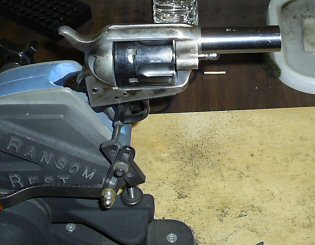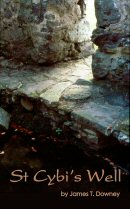|
ATTENTION: Effective Sept 1, 2020, the BBTI Project is in "Archive Status." No further tests will be conducted, but we will maintain this site and data for the use of the firearms community. Thank you. |
Cylinder Gap

For many years people have wondered about the effect of the gap between the cylinder and the barrel (forcing cone) on a revolver. How much energy is lost due to this gap? Intuitively, a larger gap would probably mean a greater loss of energy (and hence bullet velocity), but how much functional difference is there? We decided to test it and see.
This is actually a more complex problem than it might seem at first. In addition to variation caused by the actual amount of space between the cylinder and the barrel (forcing cone), there are a number of factors which could have an effect on the loss of energy through the cylinder gap. Consider these points:
- Barrel length: the longer the bullet is in the barrel, the more time there is for gas to escape through the gap.
- Bullet weight: A heavier bullet might mean that there is greater 'back pressure' on the expanding gas, forcing more out of the gap.
- Bullet type: for a given weight and loading, whether the bullet is gas checked, plated, lead or all copper could change things.
- Powder load: A faster or slower burning gunpowder may see different loss amounts through the gap.
So, we decided to test a pretty wide range of different loads available in the caliber/cartridge of our test platform, an Uberti 1873 Cattleman Single Action Revolver (Colt Single Action Army clone) in .38/.357 magnum. In addition, the gun was modified to allow us to change the cylinder gap through the use of different shims on the barrel (where it screws into the frame) to create a cylinder gap of six thousandths of an inch (0.006"), one thousandth of an inch (0.001"), and "flush" (where the barrel was tightened against the face of the cylinder).
Because we expected the effect to be fairly subtle, we decided to do ten test shots of each ammunition brand/loading for each combination of barrel length and cylinder gap, measuring the velocity of the fired bullet over two chronographs set at 15'. This meant we fired thirty rounds of each ammo type at each 1" of barrel length, altogether almost 7,000 rounds.
Below you will find a list of the 13 data sets for the different ammunition brands/loadings tested. Each one links to a page showing its performance with the three different cylinder gaps and over barrel lengths from 18" down to 2". Each ammunition brand/loading tested is listed across the top, with barrel lengths down the side. You will also find a graph to show the trend for each cylinder gap over the different barrel lengths.
In order to be able to directly compare the performance curves for each ammunition brand/loading to the next, S. W. McPherson has come up with an Excel chart which allows you to compare any combination of cartridges tested in the Cylinder Gap tests in 2011 on a single graph. You can find the Comparison Chart for the Gap Test Data on the "Raw Data" page. If you would like more detailed information showing the actual data collected for each test sequence, download the pdf or Excel files, also linked on the "Raw Data" page.
Got a question? Check the FAQ.


